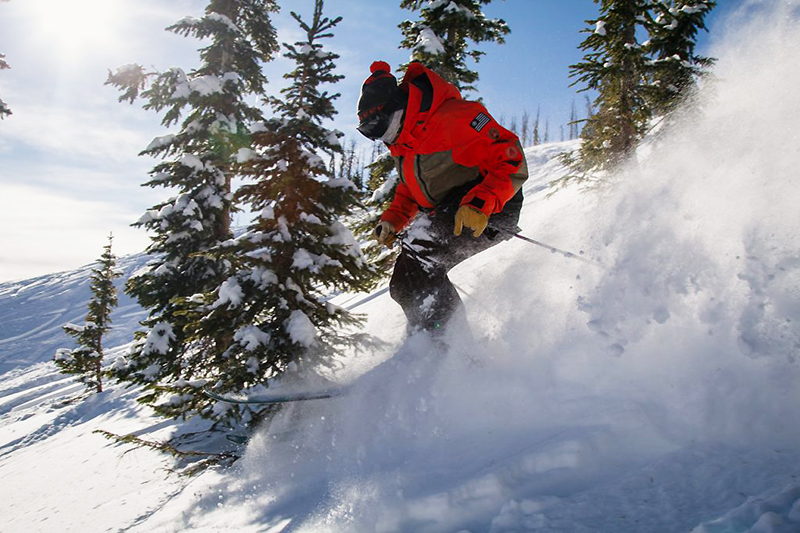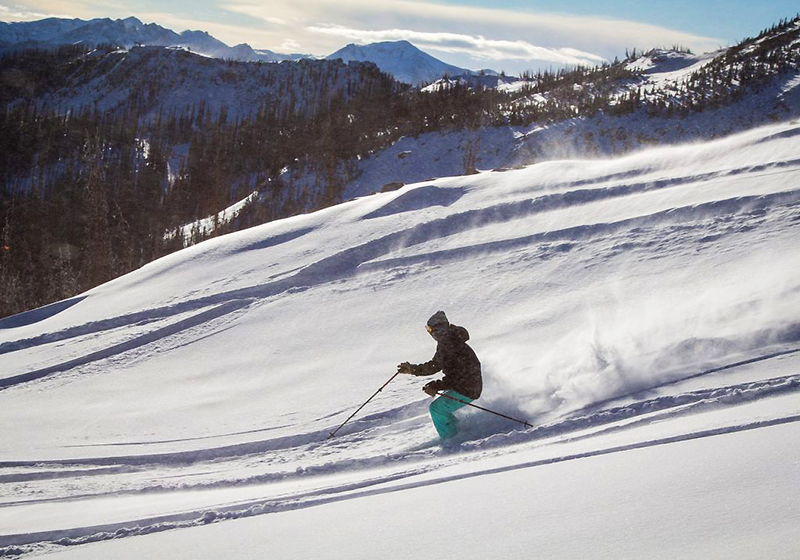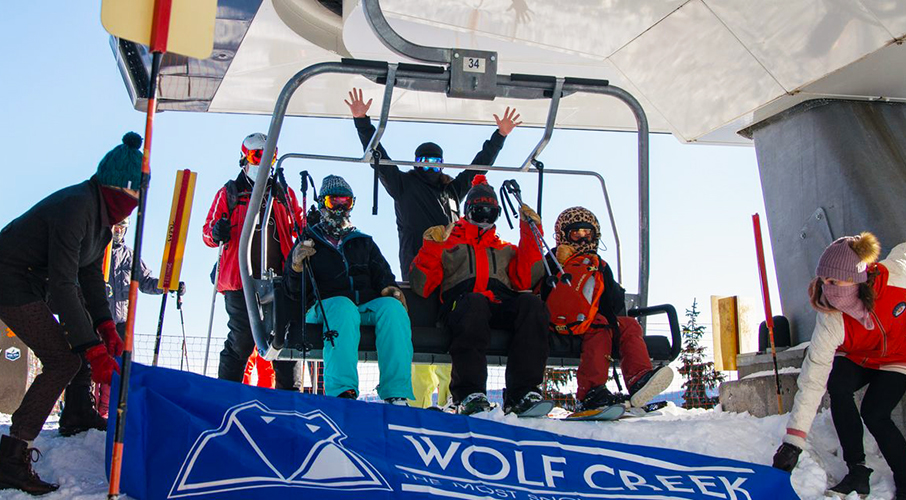<span style="color: #9e9e9e;">Taking advantage of a two-foot early season snowstorm, Wolf Creek Ski area won this year’s race as the country’s first resort to open its slopes for the 2020/21 ski season, firing up three of its nine chairlifts and 600 acres of skiing and riding at 9 a.m. on Wednesday, October 28. (Wolf Creek shut down operations November 2-3, but will resume operations for the season on November 5 beating out rival Keystone by two days.)
“All the resorts in Colorado take pride in being the first one to open for the year,” said Chris Linsmayer of Colorado Ski Country USA. “Generally, Colorado is the first state to open continuously for the season.”
The 450 skiers and riders who showed up opening day, and the 700 or so who followed each day of the weekend, were putting powder ahead of the pandemic for a few hours. “It was great. We had a big storm and it stayed cold for the first two days,” said resort Co-owner and VP of Sales and Marketing Rosanne Pitcher. “We were able to open first in 2018 and before then in 2011 when we had our earliest opening on October 7.”
Bragging rights aside, as well as letting skiers and riders test out their legs for the season, it allowed the resort to test out its operating procedures for COVID-19 protocols with many other resorts watching to see how it would work. There was more than chest-thumping on the line this year; Wolf Creek’s opening marked the first time in the 2020/21 ski season that a resort enacted a COVID-19 plan acceptable to the county and to the state of Colorado.
Wolf Creek did so by submitting a pre-season COVID-19 plan and receiving approval from the Silver Thread Health District in Mineral County. It opened only with lifts and restrooms, advising customers to pre-purchase their tickets online, wear masks, practice distancing, and bring their own water, snacks and lunch.
“COVID-19 has been a challenge, and it’s a work in progress, but it went really well,” Pitcher said. “Still, there were a lot more steps involved in getting open this year. It had a lot of moving parts.”
Even for its limited amenities “soft” opening, Wolf Creek had to come up with staff protocols and everyone from lift operators to ski patrol.
<span style="color: #9e9e9e;">Another question mark for the operator was how guests would respond to the protocols. Pitcher said the staff was on hand throughout the weekend monitoring and enforcing regulations and that they reviewed video surveillance at the base of the lifts afterward. “Every customer is different,” she said. “While some people still don’t feel the need to wear masks, for the most part, we had very good compliance and our guests had a great time.”
And other resorts paid attention.

“We got a call from A-basin congratulating us for opening,” she said, adding that each resort has its own issues to deal with in opening. “But, it’s not easy. Each resort must work closely with their own counties and health districts.”
And while ski areas are certainly watching each other, added Linsmayer, it goes beyond just Wolf Creek. “We’re keeping an eye on what happened in Southern Hemisphere this year, and even the 12 days Arapahoe Basin re-opened in May and June,” she said. “The industry shares information, and it’s a continual learning process. People are certainly watching to see what works, but all resorts are different. They’re in different counties and have different operations, so what works for one might not for another. They have different base configurations, proximity to parking lots, shuttle logistics, lift capabilities, and more.”
They also have different budgets to tap, with resorts like Wolf Creek in a different league than Vail Resorts. For Wolf Creek, the opening took planning, paperwork and big adjustments to its financial plan. As well as installing hand sanitization stations and a “fog” machine to clean the bathrooms every hour, they put in air exchange ionizer systems into each building, whose machines deploy ions that attach to and kill particles in the air. That was the biggest hit to the budget, Pitcher said, as was installing Plexi-glass “sneeze bars” in every retail and rental facility. “It looks like an aquarium now,” she said.
She added that for Wolf Creek, COVID-19 planning has been especially difficult because it was dealing with regulations from three counties; the ski area is in Mineral County, lodging is centered in nearby Rio Grande County, and a mile west begins Archuleta County, with its own regulations.
“We’re in a weird location,” she said. “It’s three counties worth of protocols.”
Still, Wolf Creek persevered and got it done. And now it’s moving onto the next plan: the second operation plan that involves opening the rest of its facility.
“I feel lucky we got our approval for our pre-season plan,” she said. “Now we’re moving onto the second one, which includes everything from our ski school to restaurants. A lot of it is hard to understand.”
<span style="color: #9e9e9e;">Colorado Ski Country USA is doing its part to help skiers and riders understand what they’re facing by launching its “Know Before You Go” program, educating skiers and riders on what to expect and the proper protocols to follow.

Admitting they borrowed the tagline from the backcountry market (“But we’ll give it back,’ said Linsmayer), he also advised staying on top of current regulations. “Things can change quickly,” he said. “Skiers and riders should check each resort’s website, social media networks and our website for updates before they go.”
Do so and you’ll be happily shredding the slopes like the early birds at Wolf Creek did, including Pitcher. “It was a great turnout and everyone was pretty excited,” she said, adding she snuck out for a few turns herself. “People are excited every year, but this year they seemed especially so.”
Photos courtesy Samual Bricker/Wolf Creek Ski Area
















